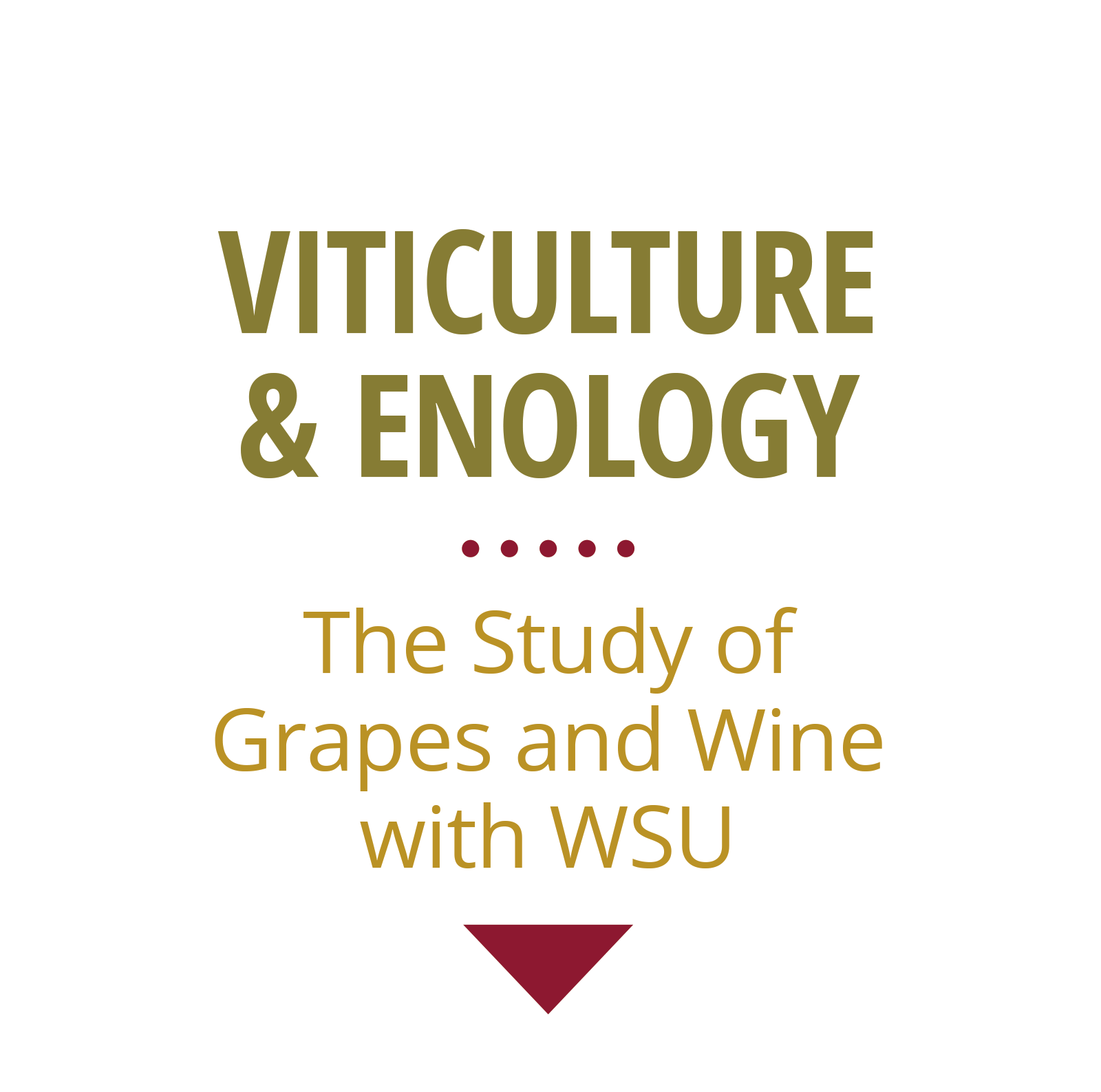The prevailing mood was festive and bright as the clink of wine glasses sounded throughout the various events of this year’s annual Washington Winegrowers Convention and Tradeshow.
WSU’s faculty and students were feeling especially celebratory, given the bevy of wins they claimed during the convention’s poster sessions. The research topics ranged from fungicide management, labor, technology, innovation, and insects, to the sensory attributes of wine. The posters and presentations are judged yearly by industry experts.
Chateau Ste. Michelle viticulturist Matthew Halldorson, a WSU alum, selected this year’s judges. For the students, he said, “the poster session is important because it is preparing them for future work as academics or extension agents.” But, he added, the poster session is significant, too, for what it represents. “It highlights the incredible partnership we have here in Washington between industry and academia.”
WSU’s Madeleine Higgins, a senior, won first place in the undergraduate session for her poster, “Sensory Attribute Differences Between Early and Late Pick-Dates in Semillon Wines.” Gratified by her win, Higgins pointed to the collaborative process that made her project possible.
“In the Tri-Cities, we are lucky to be surrounded by many supportive wineries that partner with WSU,” she said. “The students get a chance to make a wine in a commercial environment with the guidance of the winemaker, all while attaining a research goal.”
Second place in the same session went to Vince Hewett for his poster, “Cluster Architecture and Fruit Composition as Influenced by Rachis Tipping.” Noel Perez and Austin Morrell, also WSU undergraduates in the V&E program, were each honored with scholarships at the convention.
Katherine East, a graduate research assistant and Ph.D. candidate in WSU’s Department of Horticulture, earned first place in the graduate student session with her poster, “Where are the Nematodes? A Case Study in Washington State.” East’s case study looked at “two species of plant-parasitic nematodes [small worms] that are of concern to grape growers in Washington, the northern root-knot nematode and the dagger nematode.” These nematodes, she said, are “microscopic and underground,” so locating them has historically been problematic. East’s findings, however, might go a long way in aiding growers to combat the parasites.
Second place in the graduate student session went to WSU Ph.D. candidate, Margaret McCoy, for her poster, “Optimizing Airblast Sprayer for Vineyards Using Nozzle and Air Assistance Techniques.”
Arunabha Mitra, Ph.D. candidate in WSU’s plant pathology program, won first place for his oral presentation and third place for his poster, “Elucidating the Genetic Makeup of Grapevine Leafroll-Associated Virus 3 for Managing Leafroll Disease in Washington State Vineyards.”
WSU faculty and researchers were also given top honors in the professional poster session. Michelle Moyer received first place for her poster, “Duration of Fumigant Efficacy in Vineyard Replant Scenario—An Update,” and Lynn J. Mills won second place for “Mechanize More: Machine Thinning Works for Machine-Pruned Wine Grapes.” Third place in the professional poster category was awarded to Nomatter Chingandu for “The Occurrence of Economically Detrimental Viruses in Certified Nurseries and Commercial Vineyards in Washington State.”
Beyond the convention’s poster sessions, researchers from WSU’s V&E program managed, moderated, and presented their current research on a variety of Washington Winegrowers panels. Among those presenting were Jim Harbertson, Gwen Hoheisel, David James, Michelle Moyer, Naidu Rayapait, and Doug Walsh.
The convention reached its celebratory peak with the Washington Wine Industry Foundation Party and Auction which raised over $235,000 for “crafting sustainable solutions to meet the industry’s greatest needs.” For more information about the Washington Winegrowers Association, visit www.wawinegrowers.org. To learn more about WSU’s Viticulture & Enology program visit http://wine.wsu.edu.

